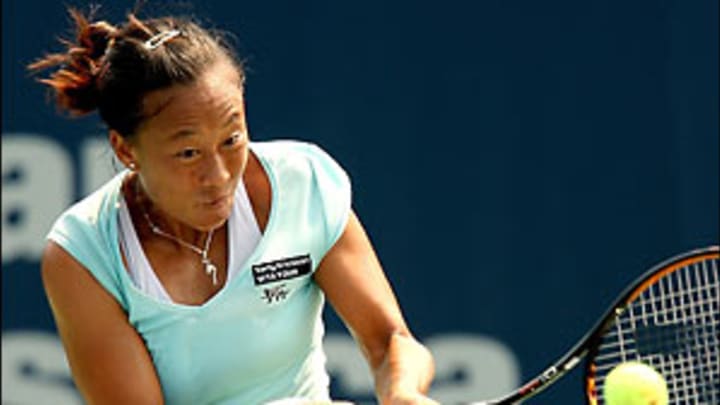Trouble on the home front


It's a great time to be part of women's tennis. As my colleague Justin Gimelstob wrote last week, the current state of the WTA is great -- we have so many new faces, new personalities and new names all knocking on stardom's door.
Take a look at the world's top 20 rankings and you'll see an ensemble of young champions, as well as the future of our sport. But take another look at the names of the future on that list and one thing that is obvious: Where are the Americans?
More specifically, where are the young, up-and-coming American women? If you look at the rankings as of today, we have the Williams sisters in the top 10 and Lindsay Davenport slowly but surely making her way back into the upper echelon. And then there's a void. You have to drop all the way to No. 47 to find the next American woman, Meilen Tu.
Don't get me wrong, Tu has had the best year of her career, and being ranked in the world's top 50 is an incredible accomplishment. Still, she's 29 and has been on tour since 1994. There are other Americans scattered among the top 100, but all of them are on the wrong side of 25. That may seem young, but in today's game, unfortunately, you're considered a veteran if you haven't started to make a name for yourself by the tender age of 21.
So what's going on? Why is it that the biggest, most powerful, most affluent country of them all can't seem to produce the champions that these other smaller, much poorer countries can? Russia, Serbia and the Czech Republic are just a few of the countries producing young players at a rapid rate.
Sure, we could sit back and point fingers at the decision-makers at the USTA and the hierarchy of tennis in America. We could toss around questions such as, are they hiring the right people? The right coaches? Is it a sound structure? Is their system the blueprint for success or more along the lines of disaster? Maybe they can be held accountable to a degree. But where this issue begins is with the young player and the environment in which she is brought up.
Part of the problem lies within our culture. American tennis players have it too easy, period. Tennis in the U.S. is an affluent sport. Yes, there are incredible inner-city and grass-roots programs all over the country. But on the whole, families have to have some money to pay for their kids' lessons, equipment, court fees, trainers, travel, etc. Many of these kids come from wealthy backgrounds and are given plenty.
The idea of having to work extremely hard for something, to fight tooth-and-nail, to know that the difference between winning and losing could mean your family having food on the table that night -- this is a foreign concept to most. Americans come from the land of excess, where you super-size this or Big Gulp that. More means everything. There are so many options, so many opportunities, and so many distractions.
Junior players in Russia or Serbia are willing to sacrifice everything in order to taste success, to get out and find a better life for themselves and their families. They don't know any differently. American juniors lose a match or have a bad practice and they can jump into their BMWs and head home to finish playing Halo 3 on their brand-new Xbox 360.
It's been said that Serbian star Ana Ivanovic would go as far as practicing in an empty indoor pool; meanwhile her nation was falling apart amid a civil war. How's that for hunger and the desire to be the best?
Again, we are so fortunate, so incredibly lucky to have been born and raised in a place that is so bountiful. Democracy, free will and choices also mean many team sports to play, video games, MySpace and TiVo. Who can blame our kids for being distracted? Tennis becomes an after-school activity, not a way of life.
Other than the silver-spoon theory, I think the lack of players pushing each other to become better is another reason we don't have more young juniors players coming up. The wave of young Russians a few years back -- Maria Sharapova, Elena Dementieva, Anastasia Myskina, Svetlana Kuznetsova -- all pushed each other, much as the Serbians are doing now.
Now, we've also got countries such as Ukraine, Belarus and Hungary producing young champions such as the Bondarenko sisters, Victoria Azarenka and Agnes Szavay. Each pushes the other to further achieve, to want to be better. We in America are lacking in that department.
So what's the solution? Can hunger and desire be something that is taught? From my experience, the answer is no. Sure, everyone wants to be the next Justine Henin, but are you really willing to do the work, make the sacrifices and give up some of life's guilty pleasures in order to achieve such greatness?
I hope that in five to 10 years time, we start to see more young Americans on the brink of stardom. But until then, there's a lot of work to be done and some important questions to be answered.
